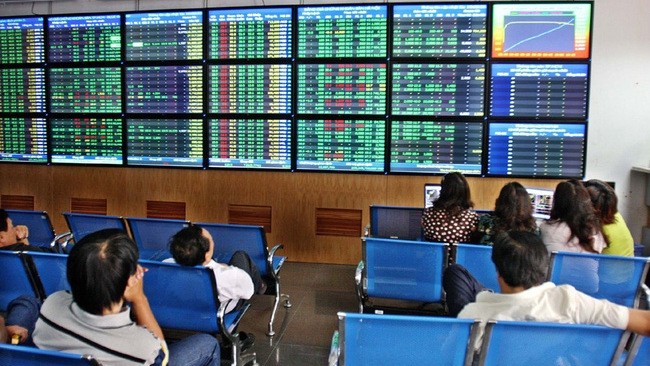Medium and long-term credit accounts for 50.6%
Vice Chairman of the State Securities Commission (SSC) Pham Hong Son, said that Vietnam’s stock market was established in 2000 but it has seen rapid and relatively sustainable strides at an average growth rate of 25% peryear.
The value of market capitalisation accounted for 52.5% of the GDP in 2010 and the size of the capital market soared to 111% of the GDP in 2018 with more than 1,000 listed companies.
However, the imbalance between the banking capital supply channel and the capital market is still very large. Deputy Governor of the State Bank of Vietnam (SBV) Dao Minh Tu said that enterprises have high demand formedium and long-term capital to expand and develop production and business activities, but the capital market has yet to develop fully in both size and quality to meetthe need of enterprises. Therefore, medium and long-term capital for the economy still relies heavily on the banking system, which accounts for about 50.6% of the total outstanding loans.
"To meet the needs of medium and long-term capital of enterprises and the economy at large, stock market development is an indispensable condition to gradually reduce dependence on banking credit," Tu emphasised.
The Ministry of Finance said that that the stock market reached 71.9% of the GDP and the bond market reached more than 39% of the GDP by the end of 2018. Of which,Government bonds account for almost all transactions with a scale of over 27% of the GDP, while corporate bonds only reached 8.6% of the GDP and increased to roughly 9.2% in the first quarter of 2019.
In the meantime, the insurance market maintains an average growth rate of about 25% per year and reached over 3% of the GDP by the end of 2018. Insurance companies have invested more than VND300 trillion(US$12.9 billion) into the economy.
In fact, several financial services and products have yet to attract investors. Corporate bonds are available but people do not know and do not invest in them, while the project on the voluntary pension fund, which was approved by the Government in 2016, has not been established.
Credit rating culture should be shaped
The shift of resources from the monetary market to the capital market is an inevitable trend in order to meet thedevelopment demand of the economy. Economic experts believe that there should be specific policies to attract idle money from the people into the corporate bond market and voluntary pension funds instead of sending money into savings accounts in the banking system.
In addition, 79% of the bank's total assets are deposits of organisations. If there is a solution to switch this capital flow into medium and long-term deposits, it will facilitatecapital for development investment.
General Secretary of the Vietnam Bond Market Association Do Ngoc Quynh said that it is impossible to expect the increase of the market size by asking all enterprises to issue bonds. Experience from countries with developed financial markets show that only companies that have developed to a certain level should issue bonds. Newly established and growing enterprises can mobilisecapital through funds.
"Malaysia has 70% of its GDP as corporate bonds but only about 30 large enterprises issue bonds, while small and medium-sized enterprises do not participate in issuing bonds", Quynh cited.
It is necessary for Vietnam to form a credit ranking culture to boost the transparency of information and stimulate professional and capable investors to participate in the market.
The Ministry of Finance issued regulations on credit ratings in 2016 and there were companies licensed to operate in this field, but credit ratings in Vietnam are yet to develop. In addition, there should have coordinationbetween ministries and a monthly working plan to promptly solve arising problems in a bid to develop the corporate bond market.
Regarding voluntary retirement products, the Ministry of Finance said there are two products including insuranceand voluntary pension funds with the aim of promotingsocial development and capital generation for enterprises.
There are six enterprises providing pension insurance products in Vietnam with total assets of VND2.6 trillion (US$115.11 million). But only one enterprise registered to operate in the area of voluntary pension funds and is being considered by the Ministry of Finance.
The fund has not been implemented as expected because it can only be formed when businesses have policies for workers and people have certain financial resources. Many countries need from 30 to 50 years to form thefund, thus, Vietnam needs to have appropriate mechanisms and policies in addition to the support from both businesses and people in order to establish the fund.
Andy Ho, Managing Director and Chief Investment Officer of VinaCapital emphasised that the fund is one of the most effective capital channels for the economy, proposing tax reduction for individuals and organisationsparticipating in the fund, while increasing the dissemination of information on this area to help people understand the safety and benefits of investing in the fund.
















